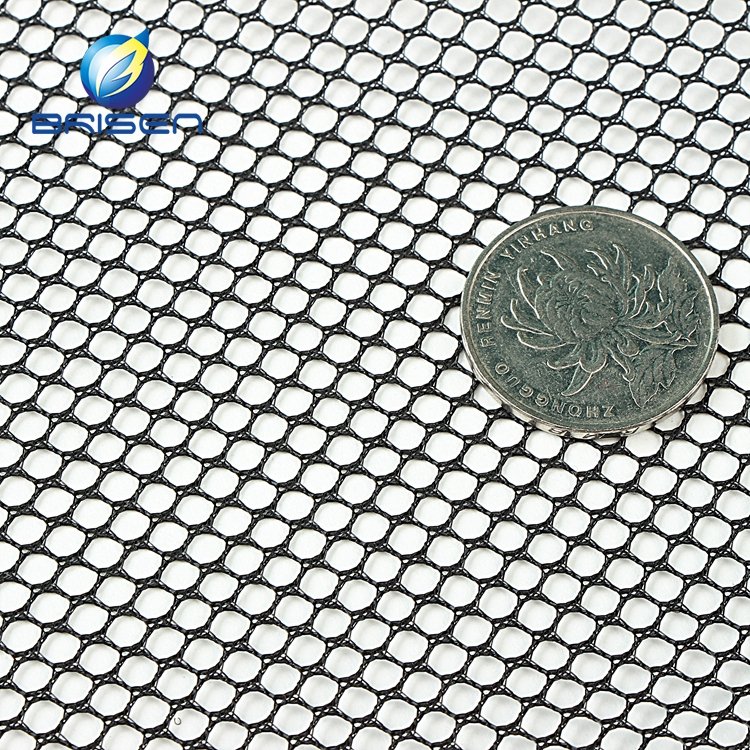Utility mesh fabrics are versatile materials known for their multifunctional applications across various industries. These fabrics, typically woven or knitted, feature an open structure composed of interconnected fibers, creating a mesh-like pattern. Their design facilitates breathability, durability, and flexibility, making them invaluable in numerous practical and creative uses.


Black Color Utility Mesh Fabric
Characteristics and Composition
They are commonly crafted from synthetic materials like nylon, polyester, or polypropylene. The choice of materials contributes to their robustness, resistance to tearing, and tolerance to various environmental conditions. Their open-weave structure provides ample airflow, promoting ventilation and preventing moisture buildup.
Composition Variations
- Blended Materials: They often feature a combination of these materials to leverage their individual strengths. Blending different fibers can enhance specific properties such as strength, flexibility, breathability, and resistance to environmental factors.
Manufacturing Process
- Weaving or Knitting: These materials are woven or knitted together to form the characteristic open-mesh pattern. The weaving or knitting process allows for the creation of a fabric with interconnected fibers, providing the structure and properties desired for various applications.
Functional Additions:
- Coatings or Treatments: In some cases, utility mesh fabric may undergo treatments or coatings to improve specific functionalities such as water resistance, UV protection, or flame retardancy, depending on the intended application.
Key Components of Utility Mesh Fabrics
- Nylon: Known for its strength and resilience, nylon fibers are frequently used in utility mesh fabrics. They offer excellent durability and resistance to abrasion, making them suitable for rugged applications.
- Polyester: Polyester fibers are known for their versatility and resistance to stretching and shrinking. They contribute to the durability of the fabric and often enhance its ability to retain shape and color.
Diverse Applications of Utility Mesh Fabrics
- Industrial Use: These fabrics find extensive use in industries due to their robustness. They serve as reinforcement materials in construction, providing support in concrete applications or acting as barriers for erosion control.
- Sporting Equipment: Utility mesh fabrics are a staple in manufacturing sports gear like bags, backpacks, and athletic apparel. Their lightweight nature and durability make them ideal for these applications.
- Creative Design: In the realm of design and fashion, these fabrics inspire innovation. They’re employed in creating unique clothing, accessories, and even architectural elements due to their texture, flexibility, and visual appeal.
- Gardening and Agriculture: In gardening and agriculture, these fabrics serve as fencing or protective coverings for plants. They aid in controlling pests, promoting growth, and providing structural support.
Benefits and Advantages of Utility Mesh Fabrics
- Breathability: Their open structure allows for excellent airflow, reducing the risk of moisture accumulation.
- Durability: Utility mesh fabrics are renowned for their resilience, making them suitable for long-term use in various conditions.
- Versatility: Their adaptability to different purposes and environments makes them a go-to material in various industries.
- Ease of Maintenance: Often easy to clean and maintain, contributing to their practicality in many applications.
Future Innovations
Continual advancements in materials technology continue to improve utility mesh fabrics. Manufacturers are exploring eco-friendly materials, enhanced durability, and specialized functionalities, aiming to broaden their scope and appeal across diverse industries.
In essence, utility mesh fabrics stand as versatile materials, bridging practicality and creativity across multiple domains, showcasing their significance in various industrial and creative endeavors.
